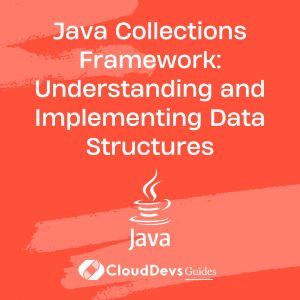Java Collections Framework: Understanding and Implementing Data Structures
Understanding the Java Collections Framework (JCF) is a crucial skill that all competent Java developers should master, making them a valuable addition to any hiring team. The JCF is frequently used to store, manipulate, and transfer data. If you’re looking to hire Java developers, ensuring they have a solid understanding of these concepts is key. This blog post aims to provide a comprehensive guide to the primary data structures that the JCF offers, shedding light on the knowledge you should expect from proficient Java developers.
Introduction
The JCF provides a standardized architecture for dealing with groups of objects. It includes various interfaces and classes to manipulate data such as lists, sets, queues, and maps.
1. The List Interface
The List interface extends the Collection interface, and it represents an ordered collection of elements. You can access elements by their index and allow duplicates. The main classes implementing this interface are ArrayList, LinkedList, and Vector.
1.1 ArrayList
ArrayList is a resizable array-based implementation of the List interface. It provides fast read operations as it maintains an array internally.
```java
List<String> list = new ArrayList<>();
list.add("Apple");
list.add("Banana");
list.add("Cherry");
System.out.println(list); // Output: [Apple, Banana, Cherry]
```
1.2 LinkedList
LinkedList, another implementation of the List interface, uses a doubly linked list internally. It is an excellent choice for frequent insertions and deletions because it provides faster add and remove operations than ArrayList.
```java
List<String> list = new LinkedList<>();
list.add("Dog");
list.add("Cat");
list.add("Cow");
System.out.println(list); // Output: [Dog, Cat, Cow]
```
2. The Set Interface
A Set is a collection that doesn’t allow duplicate elements. The primary implementations of this interface are HashSet, LinkedHashSet, and TreeSet.
2.1 HashSet
HashSet uses a hash table for storage, providing constant-time performance for basic operations, assuming the hash function disperses elements properly among the buckets.
```java Set<Integer> set = new HashSet<>(); set.add(1); set.add(2); set.add(1); System.out.println(set); // Output: [1, 2] ```
2.2 TreeSet
TreeSet, backed by a TreeMap, is a sorted set that orders its elements based on their natural ordering or by a comparator provided at creation time.
```java Set<Integer> set = new TreeSet<>(); set.add(3); set.add(1); set.add(2); System.out.println(set); // Output: [1, 2, 3] ```
3. The Queue Interface
The Queue interface models a queue in programming. It extends the Collection interface and follows the FIFO (First In, First Out) rule. PriorityQueue and ArrayDeque are two of its main implementations.
3.1 PriorityQueue
In PriorityQueue, elements are ordered based on their natural ordering or by a Comparator provided at the time of queue construction.
```java Queue<Integer> queue = new PriorityQueue<>(); queue.add(3); queue.add(1); queue.add(2); System.out.println(queue.poll()); // Output: 1 ```
3.2 ArrayDeque
ArrayDeque is a resizable array that can be used as a stack or a queue. Unlike stack, it doesn’t support element-based access but allows efficient insertion and removal at both ends.
```java Deque<Integer> deque = new ArrayDeque<>(); deque.add(1); deque.add(2); deque.add(3); System.out.println(deque.pop()); // Output: 1 ```
4. The Map Interface
The Map interface represents a mapping between a key and a value, functioning like a dictionary. The main classes implementing this interface are HashMap, TreeMap, and LinkedHashMap.
4.1 HashMap
HashMap is an implementation of the Map interface that uses a hash table for storage. It allows null values and the null key.
```java
Map<String, Integer> map = new HashMap<>();
map.put("One", 1);
map.put("Two", 2);
map.put("Three", 3);
System.out.println(map); // Output: {One=1, Two=2, Three=3}
```
4.2 TreeMap
TreeMap is a Red-Black tree based NavigableMap implementation. It maintains order according to the natural ordering of its keys or by a Comparator provided at creation time.
```java
Map<String, Integer> map = new TreeMap<>();
map.put("One", 1);
map.put("Three", 3);
map.put("Two", 2);
System.out.println(map); // Output: {One=1, Three=3, Two=2}
```
Conclusion
When you’re looking to hire Java developers, understanding their competency with the Java Collections Framework is crucial. This framework offers a comprehensive suite of data structures to handle data efficiently, and a seasoned Java developer should know when to use each structure to suit the requirements of your application. For fast search, they should consider HashSet or HashMap. For ordered data, they should be familiar with TreeMap or TreeSet. If they need to quickly add or remove elements at both ends, ArrayDeque could be their best bet.
Expertise in understanding and using the JCF effectively is a testament to a Java developer’s skills and their ability to significantly improve the efficiency, readability, and maintainability of your Java programs. Hence, as you hire Java developers, their proficiency in these areas should be a top consideration.
Table of Contents









